The Almanac
The Almanac: A seasonal guide to 2022
A perfect toolkit for connecting with the world around us and the year ahead as it unfolds – all in a compact and pocket size guide that just begs you to pick it up and browse.
The Almanac: A seasonal guide to 2022 reinvents the tradition of the rural almanac for a new audience. It gives you the tools and inspiration you need to celebrate, mark and appreciate each month of the year in your own particular way. Divided into the 12 months, a set of tables each month gives it the feel and weight of a traditional almanac, providing practical information that gives access to the outdoors and the seasons, perfect for expeditions, meteor-spotting nights and beach holidays. There are also features on each month’s unique nature, such as the meteor shower of the month, beehive behaviour, folklore, seasonal recipes and charts tracking moon phases and tides.
You will find yourself referring to The Almanac all year long, revisiting it again and again, and looking forward to the next edition as the year draws to a close.
PRAISE FOR THE ALMANAC:
‘The perfect companion to the seasons’ - India Knight
‘Indispensable’ - Sir Bob Geldof
‘This book is your bible’ - The Independent
‘An ideal stocking filler’ - The English Garden
‘I love this gem of a book’ - Cerys Matthews
The New Almanac
Hello! Long time no write. I am embarking on an exciting new project, crowdfunding an annual publication called The New Almanac, a reinvention of the traditional rural almanac, full of gardening, recipes, folklore and tables on the phases of the moon, sun, tides and more. Just a week into the crowdfunding and it is a third funded, but it needs your support in order to happen! Please have a look at my page [click here] and short video here and pledge if you can.
Petal, Leaf, Seed – a pesto blueprint
.
A sunny day with nothing to do but hang out with the kids doesn’t come along often, and so on Sunday my mind turned to picnics. My birthday is in May, and I have a romantic turn of mind, so I am no stranger to the ‘whoah, bugger, it’s still WAY too early for a picnic!’ style of picnic: pretty tablecloths and sandwich wrappers whisked away on a stiff breeze; blankets intended for lounging instead being fashioned into a swift bivouac against a passing hailstorm, and so on. But still, the weather forecast looked so promising I had even gone without tights (albeit with an emergency pair in my bag) and part of the whole deal with picnics is the triumph of hope over experience. We packed our picnic, brave, optimistic souls.
My new book – my first recipe book – is published in ten days time, and I am all nerves. I wanted to revisit some of the recipes and reassure myself that all is good, plus I thought it would be fun to eat them in the sunshine/unforecasted sleet. The book is called ‘Petal, Leaf, Seed: cooking with the treasures of the garden’, (and you can preorder it HERE) and it is about all of those delicious little nubs of flavour that you can grow in the garden – although lots of the ingredients can also be bought without too much ado. Over the last few years I have found that I prefer to concentrate on growing a harvest of prettiness and taste than on growing the bulk – rose, calendula and viola petals over potatoes; coconutty fig leaves and sharp, fruity blackcurrant leaves over onions; aniseedy fennel seeds and fat peppery radish seeds over parsnips. And this is what the book is about, the growing and the cooking.
Being in a rush on Sunday morning I went for straightforward picnic fare – bread, hard boiled eggs, cheese, and then something from each section of the book to pep them up: a little salad topped with primroses and violas, a couple of dipping salts made from seeds and nuts; and a herby pesto.
When writing the book I had particularly lovely fun investigating pestos, green sauces and their relatives, and realised that there is a formula that is repeated all over the world with different herbs and accompanying ingredients. Once you have it down pat you can use whatever is at hand and each time come up with something delicious, so here it is: some herbs; a thickener; something umami in flavour; garlic and oil. So bearing that pattern in mind, the classic pesto goes: basil; pine nuts; parmesan; garlic and oil. Then as you move around the Mediterranean you find other versions that change the herbs, omit nuts and cheese but introduce umami in the form of anchovies (salsa verde), or swap basil for tarragon and pine nuts for breadcrumbs (salsa alla dragoncello, from Sienna). There is even laksa pesto in Singapore, thought to have arisen when Portuguese settlers met local ingredients, and made from coriander pounded with cashew nuts and fish sauce. I love a blueprint like this because I think it frees you up to just cook with what’s at hand, rather than feeling you have to follow a recipe, and I put pages like this throughout the book.
And hence sure enough the pesto I made for the picnic was in this spirit: parsley and chives; toasted hazelnuts; parmesan; oil, salt and pepper. We dipped the bread and the boiled eggs into it, and ate it with the cheese, and the sun shone, and the children ran around like dogs for a full five hours. I’m afraid I did put my emergency tights on, but that hailstorm never came.
If you would like to have a peak at the book you will find it HERE
Christmas cake and Nigerian registrars
I made a Christmas cake at the weekend. Here’s why I like making Christmas cake:
1) When I was at college far away Mum would make an extra one, and then give me half of it to take back with me after Christmas, and it’s that sort of a thing: a labour of love, packed full of sustaining things. ‘If you can’t afford to pay for any heating at least you’ll have a half-moon of masses of fruit jammed together sat in the bottom of your rucksack’ goes the thinking. She still makes an extra one and gives half to my brother, who lives in York and not actually in the trenches. But I recognise the urge from when I pack my kids’ packed lunches for school: ‘I can’t be there if you fall over, but maybe this flapjack will remind you that I love you, if you do.’ And the thing about a Christmas cake is that no one but the maker realises what a palaver it is, which makes it extra mum.
2) I like the fact that so many people tackle it, that everyone feels the same, about their mum making it, and their nana before, and so feels like it is a part of their thing. It isn’t a hard thing to make per se, but like I say: palaver. The buying of the million bits of fruit, the wrapping with newspaper, the fashioning of a funny hat with a hole so the top doesn’t burn and the incredibly long slow cooking (mine took SIX hours). I like that there is no celebrity ‘my take on’ or ‘three ways with’ required to spur us into doing it. It just is. We always have.
3) And I love that this so very British, cosy, sustaining, ingrained thing comes from so many other places, and that our Christmas traditions are impossible to extricate from our history of connection, travel and openness with the rest of the world. Raisins from Turkey, sultanas from Iran, cinnamon from Sri Lanka. That thought reminded me of this snippet of film from the house of commons this week, in which the wonderful Dennis Skinner takes on UKIP’s newest MP, and talks proudly of his ‘United Nations heart by pass’. It is 51 seconds that will lift your own heart, and a good reminder what a bullshit version of Great Britain UKIP is peddling. There are lots of things that are only here because of our mixed up, complex, outwards-facing history. Dennis Skinner and Christmas cake are among them.
Allotment history film – Back to 1917
The second in my films made with Simon Bisset of Biscuit Productions about my project tracing the history of my allotment. If you missed episode 1 you can find it here, plus a little info about the project.
Two-day-old fridge berries jam
You go up to the allotment in the late afternoon and everything is bursting with juice. The scent of the strawberry patch makes it impossible to walk past without stuffing yourself to the point of queasiness. So once you’ve reached the point of no more eating you pick and you pick and fill a big Tupperware container with strawberries, raspberries, tayberries. How beautiful and glistening they are. You take a picture of them for twitter and get some virtual applause for owning such very fine berries, then you wash them and pick the wriggling things off of them and all have big bowls of them with ice cream after tea. Then there’s still loads left so you pop them in the fridge and all eat them with yoghurt for a breakfast so healthy and seasonal and gorgeous. But – oh – there’s STILL loads left that evening and now they’re not quite so tempting, plus you’ve really eaten quite a lot of strawberries in the last 24 hours. You’ll just leave them sitting there in the fridge, for tomorrow. By then the ones closest to the back have got a bit too cold and developed severe mush all down one side, the others look a bit pale and troubled. You show them to the children and they pull faces. You dont even consider showing them to twitter.
It seems criminal for any home-grown berry that once aromatically wafted across your entire plot to end up on the compost heap, and so last night I mined the fridge for these nearly-gruesome bits of pre-compost, put them in a pan, added a couple of spoonfuls of vanilla sugar plus an old vanilla pod fished out of it and the juice of about half a lime, and simmered for about ten minutes before switching it off to cool (this is not actually jam of course, probably more compote, and it wouldn’t last if jarred, but it only had to last until the morning and the kids are more likely to eat jam than compote, so jam it was named). I then made drop scone mix, covered both with cling film, and went to sleep. This morning we breakfasted like kings, queens, princes, and really quite stroppy little princesses (despite the fact that her mother had gone to all that trouble).
Folding
I am the least OCD person you know. My kitchen is more often messy than not, my children more often grubby. That’s fine. That’s how goddam laissez faire I am. But I am hugely uptight about folding. I like to make beds ON MY OWN thank you, when I can take all the time I need to smooth and tuck and repeat. I go into a special sort of zone when the tent has to be put away at the end of a camping trip, dragging it off to a quiet spot and endlessly circling and adjusting and then – finally – folding.
And I had it again yesterday when we put the skin onto the polytunnel. A polytunnel skin is a flat sheet, a poltunnel a half cylinder, so there are potentially a lot of imperfect and flappy bits. At the ends around the doors you have to make these folds in order to pull everything tight and neat. Everyone else back off: I am in my happy place now. Shh…
Imperfect, even so, but I liked it enough to take a photo of it.
Plot 22, episode 1
Two summers ago I met an 80-year-old man who had worked his allotment plot all of his adult life. His father had worked a plot on the site before him, and his grandfather before that. There was the human history of this allotment site, laid out before me in lifetimes. It put a shiver down my spine.
It also started me thinking about my own allotment’s lineage, about who might have worked my plot, and about what was happening in the wider world while they did. This has led to my new idea, which is to try to trace back the names of each of the plot’s previous holders. I was working away at this project, spending much of my time at the Bristol records office sifting through piles of old papers, trying to beat the idea into good enough shape to approach a publisher, when I was approached by Matthew Wilson and Simon Bisset about making some films for their new YouTube channel Digging It. Being quite obsessed and having almost no other thoughts in my head I suggested we try to make a little film or two about this, and they liked the idea. So Simon and I spent a freezing day up at the plot getting hailed on and generally blown about, and we made this video, below, which tells just a little of the start of my research. The research is as yet a very incomplete thing, and I am still feeling my way around how to find the information I need, but I am enjoying the process and I hope you enjoy the film.
Please do subscribe to the channel if you like it. There will be more episodes from me, and lovely films from others too.
August supper club tease
A bit of a tease…. I sent the menu and dates out for our next supper club to our mailing list late last night with the intention of posting here this morning, but all places have now gone. Here it is anyway to try to tempt you onto the mailing list for next time (or the waiting list for this time, we do get cancellations).
The aim of the supper club is to cook the food that is in season in our gardens and allotments (we can’t supply it all from there – tho we are getting better at this – but use local organic sources where we can’t). It’s just meant to be a lovely meal from the sort of things we are growing.
Currently we hold the supper club at my house in north Bristol, and maybe this time out on the veranda if we’re lucky with the weather. We make it sparkly and beautiful. Suggested donation is £30 and it is BYO bottle but there is a free cocktail on arrival. Follow us on twitter at @LiaandJuliet and email [email protected] to put yourself on the mailing list for the next one.
~
August 10th menu
~
Lemon verbenatini with lemon verbena sherbet
~
Clear broth with allotment harvest vegetables (ham hock broth OR vegetable)
Sourdough bread
~
Potted cheese with dill cucumber pickles
~
Gnocchi with roast baby fennel and fennel sausage
OR
Gnocchi with broad beans, mange tout, peas and ewe’s curd
~
Peach melba
~
Green fennel seed fudge
Mint tea
~
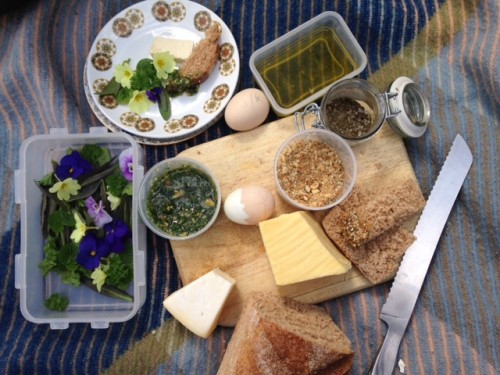
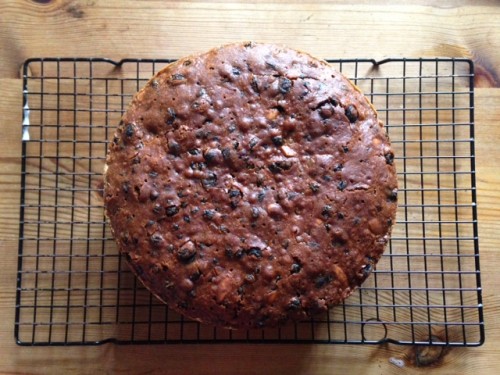
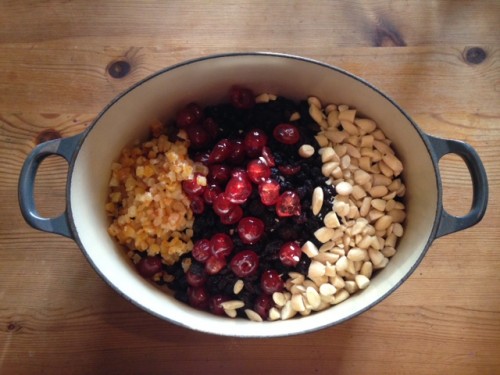
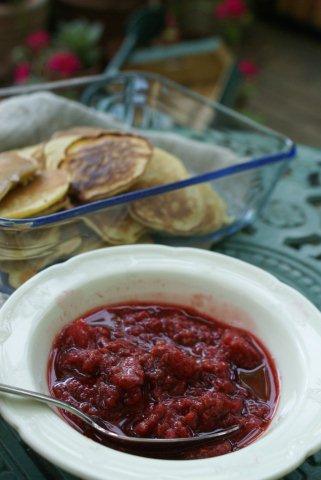
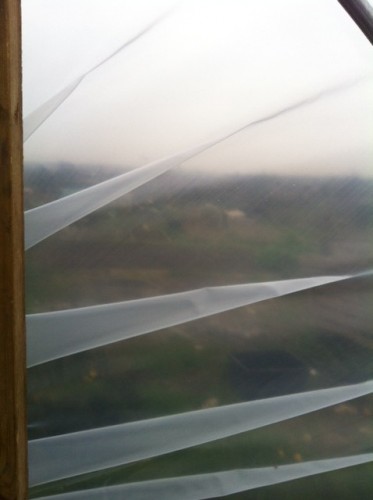

Recent Comments